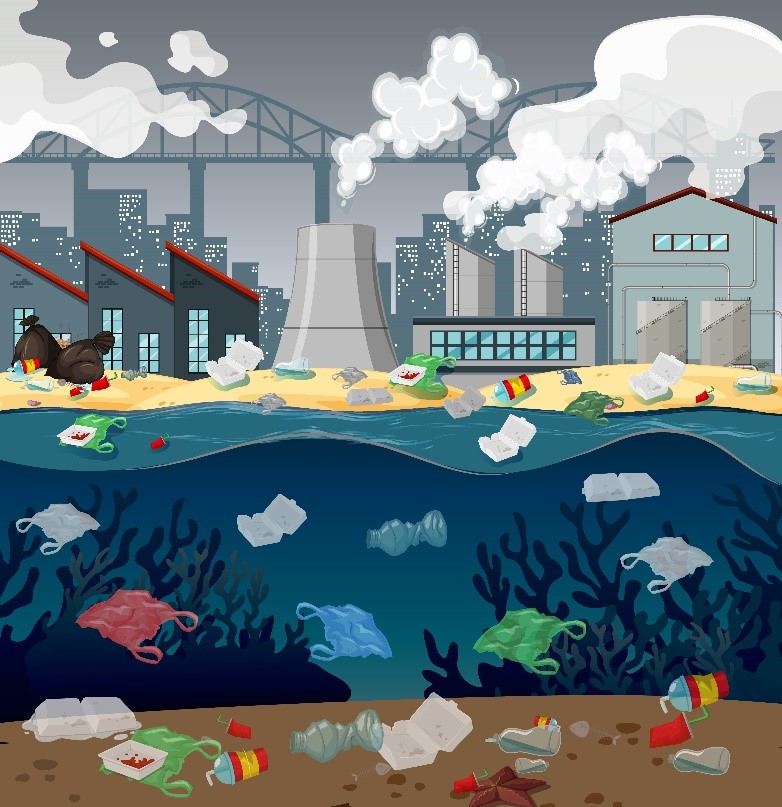Blog
|
E - Management
The Hazards of Plastic Pollution in our Environment.
March 8th, 2021 | Written By Fola Runsewe
It is estimated that approximately 270 million tons of plastic is produced annually on a global scale and about 65 % -70% of plastic waste will leak into the open environment either on land or into adjoining natural water bodies. The presence of large volumes of disposed plastic waste in the natural environment causes hazardous impacts to living and non-living organisms in the environment.

Fig 1. Animation of plastic pollution in the marine environment. (Freepik, 2021)
Over the past 50 years, Plastics have replaced glass and aluminum as a cheaper and more efficient means of packaging in the food and beverage industry while the production of plastic is projected to double in the next 20 years – (world economic forum report, 2015).
The major classes of plastic waste material are LDPE (low density polyethylene); HDPE (high density polyethylene); PET (Polyethylene terephthalate) and PP. Plastic is non-Biodegradable and will remain indefinitely on land and water for over the 400 years or more.
The Environmental Impacts of Plastic Pollution
Plastic is a byproduct of fossil fuels and contain some hazardous compounds which are harmful to human health and to the biodiversity in the ecosystems particularly when they burnt at landfill sites into the open air or dumped on land.
Large quantities of plastic materials have leaked into public drainage channels and sewers, forming clogs which compound the problems of urban flooding and providing a breeding ground for disease causing mosquitoes and pests.
Furthermore, the transition of plastic waste begins on land as leaks and ends up in the oceans through municipal drains and other smaller water bodies causing more hazards which have social and economic impacts on eco - tourism and the livelihood of people whose income is derived from marine ecosystems. (Deloitte 2019)
Plastic pollution also creates other hazards in the marine ecosystems such as inland rivers and open oceans. Approximately 8 million tons of plastic end up in the world’s oceans annually forming a whirlpool of waste called the “great ocean patch’’.
Marine creatures usually feed on micro plastics in the oceans mistaken them as food and some larger creatures such as whales have died from ingesting large quantities of plastic materials. Smaller creatures along the marine food chain are also affected including human beings who feed on affected seafood.
Sustainable Solution
A recent study in an article titled, integrating circular principles in environmental management systems by H.S Kristensen et al (2020) may contain a viable solution to control the devastating impacts of plastic pollution in our environment.
It is by adopting a more sustainable approach that will involve increased stakeholder interactions and explore new opportunities in the framework of the circular economy which seeks to replace the end-of- life concept of a conventional linear system, towards the recovery, reuse and recycling of materials during the production and consumption process. Through this model, environmental quality can be improved with economic incentives that endear social participations in the communities.